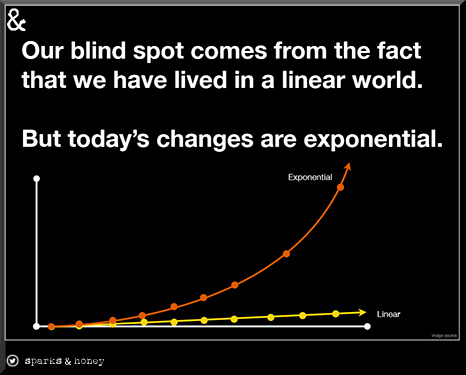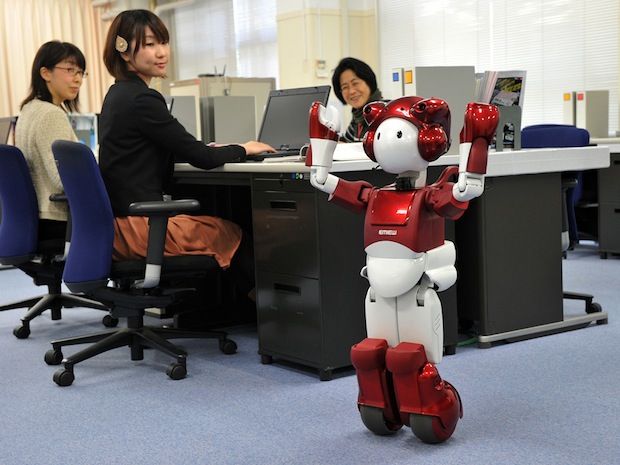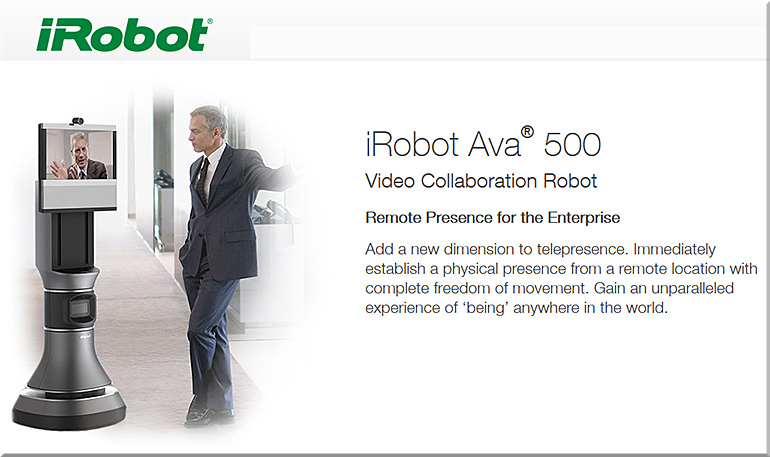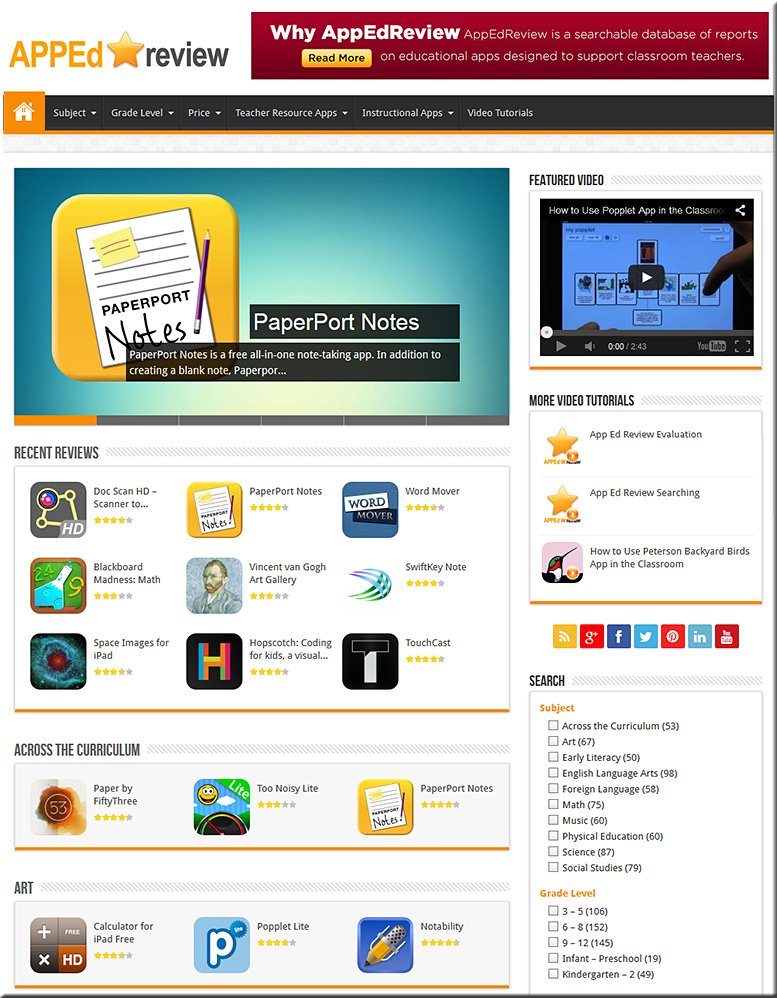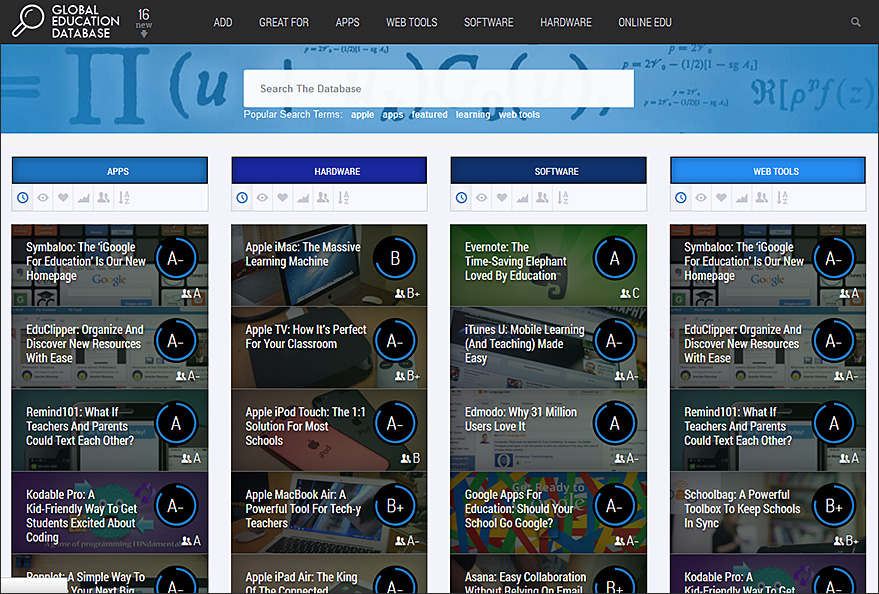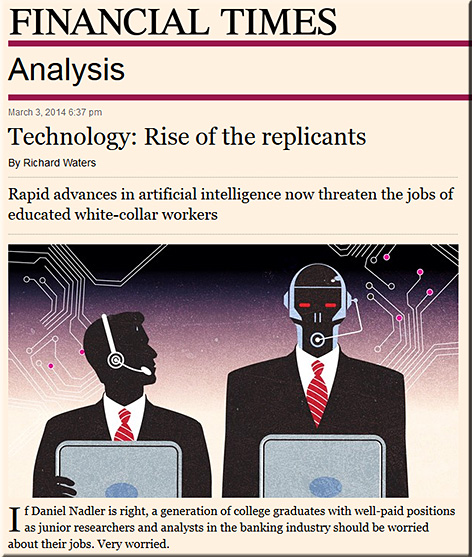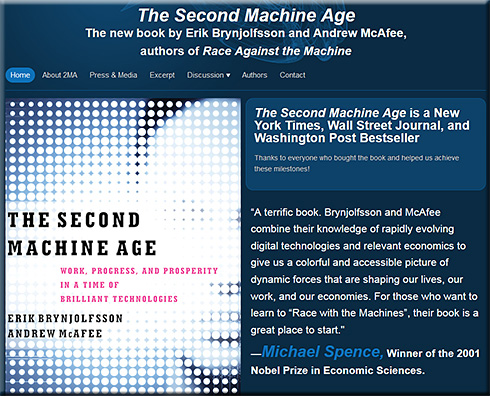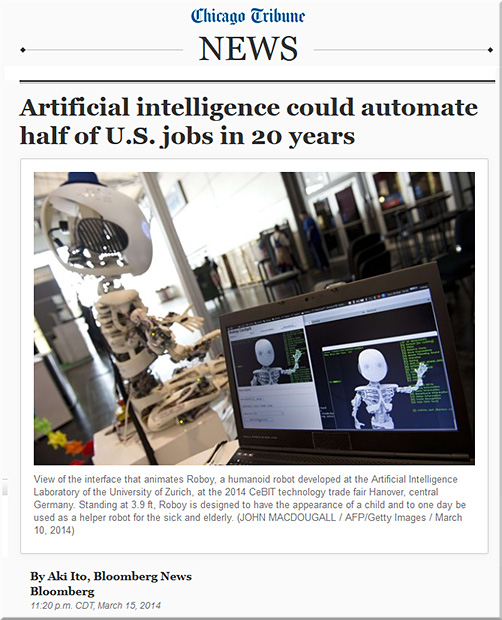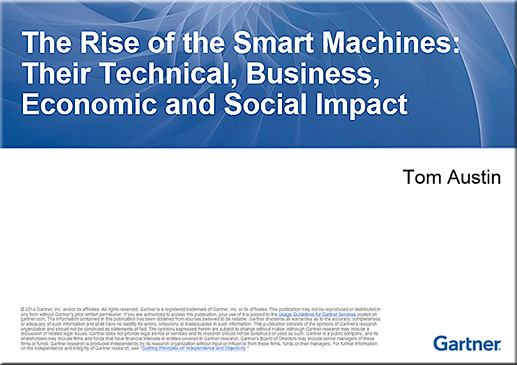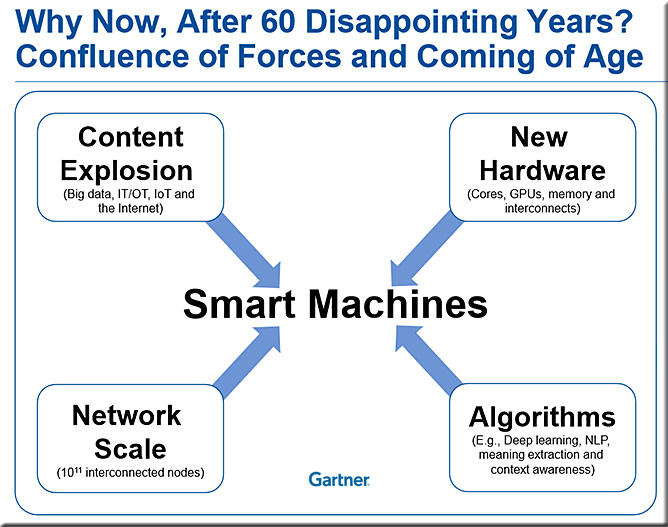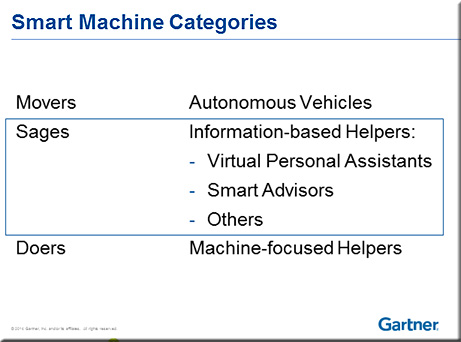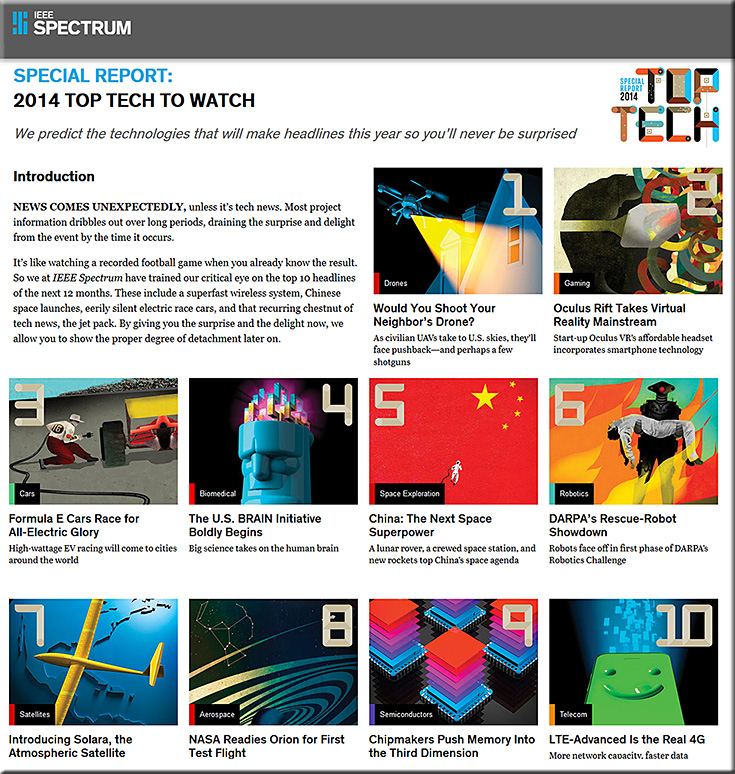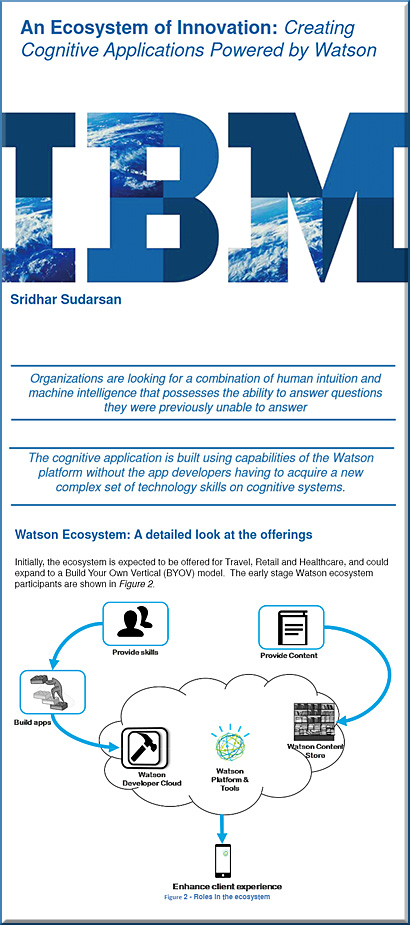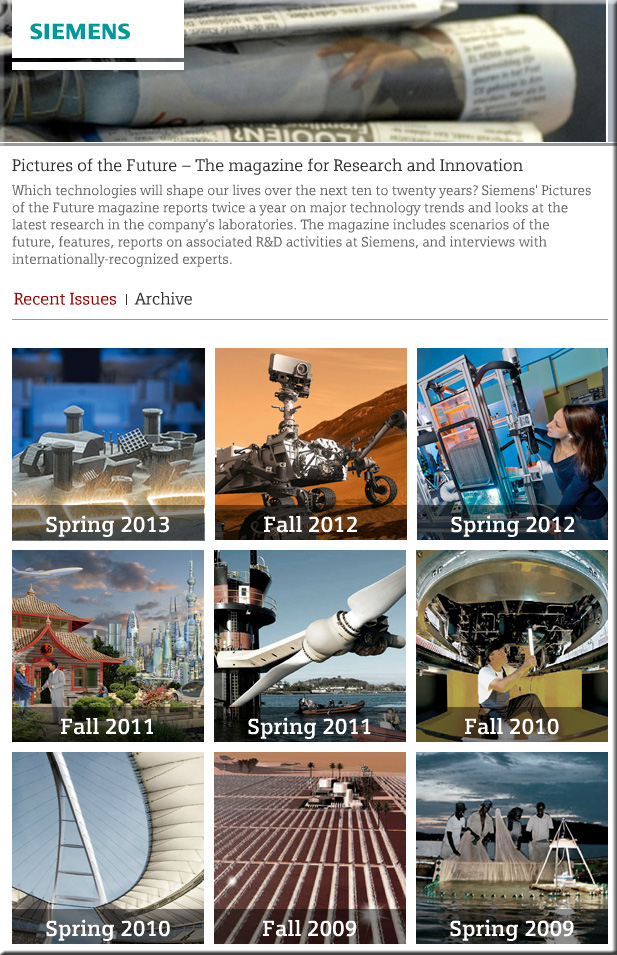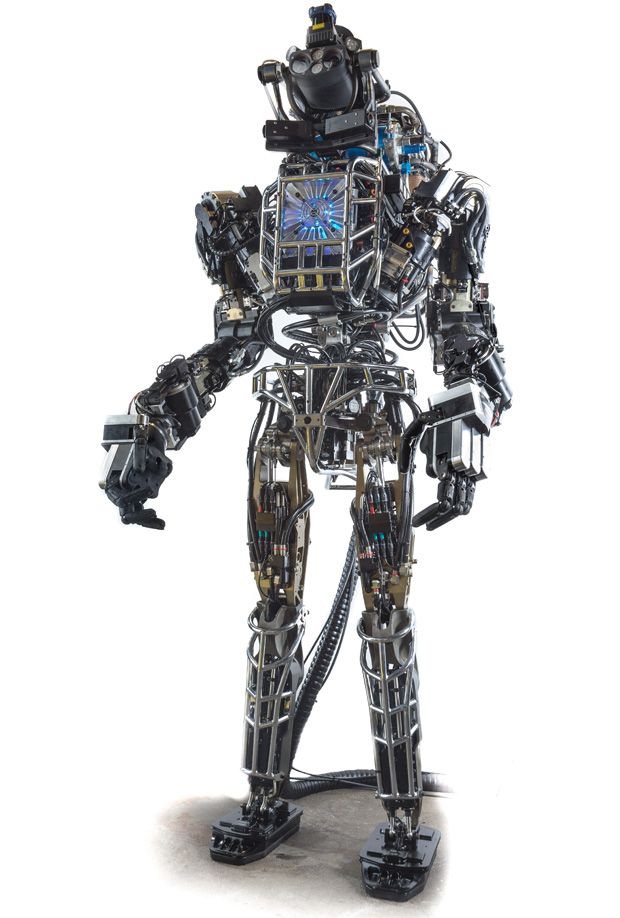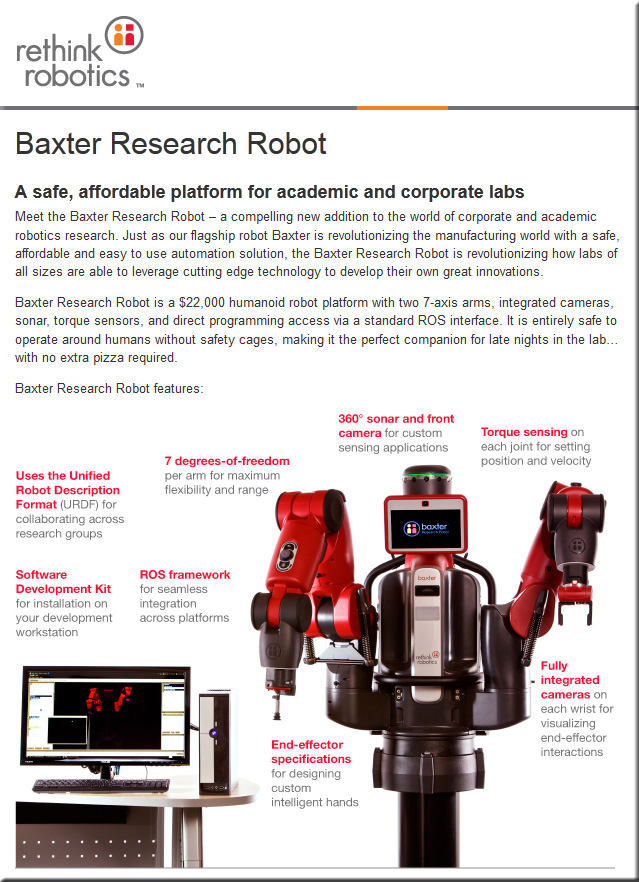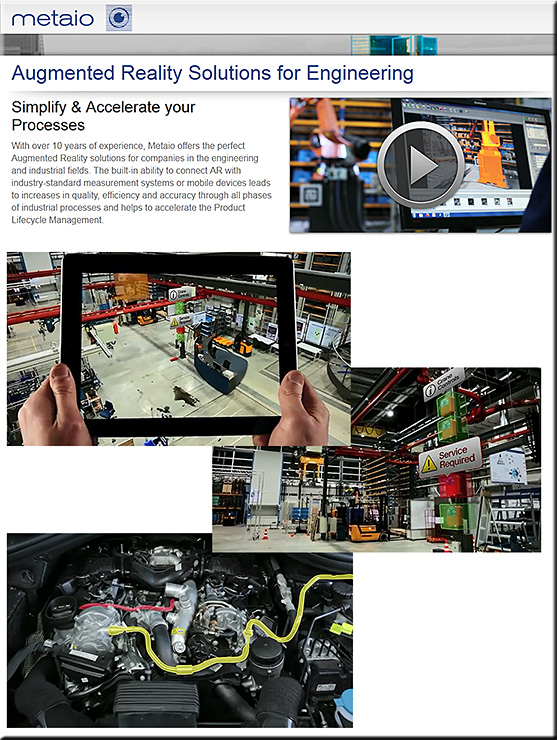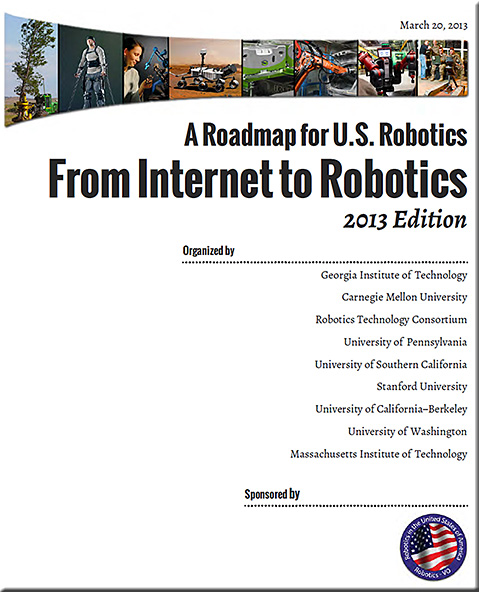5 cool (and informative) robot videos you don’t want to miss — from robohub.org by Frank Tobe
Excerpt:
This wide-ranging group of robotics-related videos are worth watching. Set aside some time, make sure you have a hi-speed connection, and watch them. They range from cool to informative to downright scary.
5 areas in robotics that will transform society and their economic impact — from robohub.org by Colin Lewis
Excerpt:
The 5 areas in Robotics, which are already here, that I believe will have a major economic impact and help to transform society over the next decade or so are:
- Drones
- Medical Procedures, Operations and Health
- Prosthetics and exoskeletons
- Artificial Assistants
- Driverless Cars
Robot gives telecommuters a presence in the workplace — from bostonherald.com
Excerpt:
The robot memorizes the layout of an office building, allowing a remote user to simply press a point on a map to dispatch Ava 500 to a certain office or conference room. Once there, the worker “teleports” into the robot, appearing on the screen and engaging with whoever’s around.
4 robots that teach children science and math in engaging ways — from scientificamerican.com by David Greer
Modular, programmable automatons make STEM learning fun
Excerpt:
Robots can capture a child’s imagination like no other tool by creating a fun, physical learning process. With robots, kids learn programming via interactive play by moving a robot in various sequences and using intuitive, visual programming on a computer screen. The children also learn STEM (science, technology, engineering and math) by watching and interacting with robots that demonstrate the practical results of the day’s lesson.
Microsoft makes socially interactive robots a reality (video) — from technocrazed.com by Arsalan Rasheed
This is a bit troubling to me. My fear? Businesses will replace people with robots in a heartbeat if they can cut costs. If a robot can learn to give directions to visitors, will the companies keep their receptionists, information center employees, other — or lay them off?
Along those lines, here are a couple of items that speak to this fear:
It is not skills or majors that are being devalued. It is people.
Sarah Kendzior
Surviving the post-employment economy
Do today’s leaders actually care about the person that is doing the work?
Do they even know their name let alone what provides them with job satisfaction?
Dan Pontefract
Whose job is leadership, anyway?










